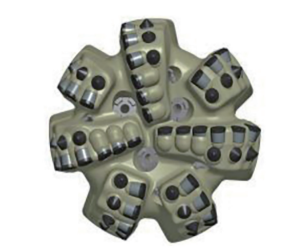Advantages And Challenges in Using PDC Cutters in the Oil And Gas Industry
Advantages And Challenges in Using PDC Cutters in the Oil And Gas Industry

Polycrystalline diamond compact (PDC) cutters have become increasingly popular in the oil and gas industry due to their ability to increase drilling accuracy and control. However; with the increasing demand for deeper and more complex wells, the PDC cutter faces a number of challenges in the oil and gas industry. In this article, we will explore the advantages of PDC cutters and the many challenges facing in the future oil and gas industry.
The Advantages of PDC Cutters:
1. Stability and Durability
PDC cutters are made of synthetic diamond particles that are fused together under high temperature and pressure, making them extremely durable and stable. This stability and durability allow for more precise drilling and better control over the drilling process.
2. Uniformity
PDC cutters are designed to have a uniform shape and size, which allows for more consistent drilling and smoother boreholes. This uniformity also reduces the risk of deviation from the planned drilling path, increasing drilling accuracy.
3. Design Flexibility
PDC cutters can be designed with specific geometries and cutting structures to maximize their performance in a particular drilling application. This design flexibility allows for more precise drilling in various rock formations, including hard and abrasive formations.
4. Reduced Vibrations
PDC cutters are designed to reduce vibrations during drilling operations. This reduction in vibrations allows for better control over the drilling process, resulting in more accurate drilling and reduced wear on the drilling equipment.
5. Faster Drilling Times
PDC cutters are more aggressive and faster than traditional drilling tools, allowing for faster drilling times and more precise drilling. This increased drilling speed also reduces the risk of deviation from the planned drilling path, resulting in more accurate drilling.
In conclusion, the stability, durability, uniformity, design flexibility, reduced vibrations, and faster drilling times of PDC cutters all contribute to increased drilling accuracy and control. The use of PDC cutters has revolutionized the oil and gas industry, allowing for more precise and efficient drilling operations.
The Challenges of PDC Cutters:
1.High initial cost of PDC cutters
PDC cutters are more expensive than traditional drilling tools, which can be a barrier to their adoption. The cost of PDC cutters can be a significant investment for drilling companies, especially for smaller operators. However, the long-term cost savings associated with PDC cutters may outweigh the initial investment.
2.Limited availability of skilled technicians
Designing PDC cutters for specific drilling applications can be challenging. The design of the cutters must take into account the specific geological formations being drilled, as well as the drilling parameters, such as weight on bit and rotary speed. This requires a thorough understanding of the drilling environment and the properties of the rock formations being drilled.
3.Compatibility issues with certain drilling formations and conditions
PDC cutters are designed to withstand high temperature and pressure, but there are limitations to their use. In some drilling applications, such as high-temperature drilling, PDC cutters may not be able to withstand the extreme conditions, leading to premature wear and failure.While PDC cutters are highly durable, they are also brittle. This brittleness can lead to chipping and breakage if the cutters are subjected to excessive impact or shock. This can result in reduced drilling efficiency and increased downtime.
To overcome these challenges, collaboration between manufacturers, operators, and service providers is crucial. By leveraging the collective expertise and resources of the industry, we can develop innovative solutions that enhance the performance and reliability of PDC cutters in the oil and gas industry.For example, in the southern Negros development area of the Philippines, an innovative conical diamond element (CDE) was designed for the local ultra-deep well research, and a corresponding new PDC bit was designed, as shown in the figure, with higher impact strength and wear resistance compared with traditional PDC bits. Some companies start with the manufacturing process of the drill bit, such as Schlumberger's new high temperature and high pressure PDC bit tool manufacturing technology, which improves the micro-structure strength of the PDC and reduces the cobalt content, thereby improving the thermal stability and wear resistance of the diamond structure, laboratory tests have shown. HTHP tools offer higher wear and thermal fatigue resistance than standard PDC tools, increasing by approximately 100 percent without compromising impact resistance. Not only that, foreign countries have also designed intelligent drill bits. For example, in 2017, Baker Hughes released TerrAdapt, the industry's first adaptive drill bit, which has a regulator that automatically adjusts the bit's cutting depth to improve drilling speed based on formation rock conditions. Halliburton has introduced its new generation of adaptive bit technology, the CruzerTM deep cut ball element, which automatically adjusts drilling parameters to down-hole conditions, significantly reducing torque while increasing ROP and increasing drilling efficiency.

If you are interested in PDC CUTTERS and want more information and details, you can CONTACT US by phone or mail at the left, or SEND US MAIL at the bottom of the page.





















